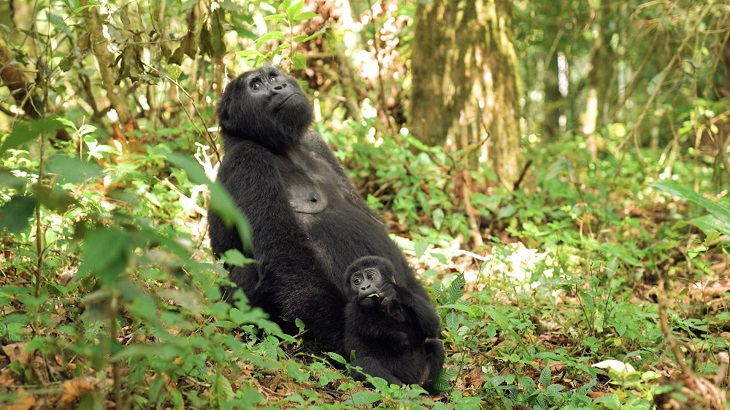Bwindi Impenetrable National Park is one of Africa’s oldest and most biodiverse ecosystems, home to a vast array of birds, reptiles, mammals, and almost half of the world’s remaining mountain gorillas. For three decades, Dr. Kalema-Zikusoka has walked among the gorillas, protecting them and learning from them.
She tells CNN, “I would say that the journey that the gorillas have been on in the past 30 years is a beacon of hope in the world of conservation. The gorillas have transformed Uganda and brought Uganda conservation and tourism back on the map.”
Known as ‘The Pearl of Africa’, in part for the abundance of its wildlife, the reign of Idi Amin in the 1970s took a heavy toll on Uganda’s animal kingdom and its people. Dr. Kalema-Zikusoka describes the impact on her family: “When I was two years old, my father was taken away from us. He was a prominent minister in the previous government, and so when Amin came into power, my dad was one of the first victims. When I was old enough to understand what had happened to him, I felt like I wanted to continue his dream, his legacy of a prosperous Uganda through my passion for wildlife.”
In 1994, Bwindi was made a UNESCO World Heritage Site, and preparation for gorilla tourists began. Through a process known as habituation, 27 gorilla groups in the park have slowly become accustomed to peaceful human presence in the forest. Dr. Kalema-Zikusoka talks about monitoring their populations: “I try to make notes on each of the gorillas, looking out for unusual behaviour, unusual appearance, to see if there’s any clinical signs, but also just generally checking on them to see how they are. They also have different personalities. And so, their personalities also help us to know whether they’re okay or not.”
For Dr. Kalema-Zikusoka, the fate of the gorillas is tied inextricably to the wellbeing of their human neighbours. The transmission of diseases between humans and mountain gorillas had led to severe infestations of scabies, “They go to people’s banana plantations to eat the banana plants, and they often find dirty clothing on scarecrows. And that’s how they picked up the scabies, not by touching a person.”
That moment was a turning point, and Dr. Kalema-Zikusoka realised that to save the gorillas, she had to improve the health of the people living alongside them. In 2003, she founded Conservation Through Public Health. “We reach about 10,000 households around Bwindi. We developed a whole set of indicators that they should have to show that they have good health and hygiene. So, some of them include having a drying rack, others having a clean toilet, a hand washing station at the home, and a separate animal house. So, we go through all those parameters. Anything to avoid human wildlife conflict.”
The mission to reduce poaching in the forest is two-fold. Firstly, it helps the local community to see the benefits that gorilla tourism can bring to the area in the form of new jobs, infrastructure, and schools. And secondly, in helping former poachers find alternative income streams. Dr. Kalema-Zikusoka explains, “During the pandemic, we started the ready to grow program where we give them fast growing seedlings. And then we also try to encourage them to have a cash crop like coffee or tea because the more that they have food security, the less likely they’re going to enter the forest to poach.”
With each step taken to ensure the long-term health, stability, and wellbeing of Bwindi’s people, Dr. Kalema-Zikusoka and her team are helping to protect a larger ecosystem in which gorillas can live in harmony with man. She concludes, “The mountain gorillas have shaped my life. I went there as a vet student, and I never left. I always get very excited when I hear that a baby mountain gorilla has been born. It gives me hope that the numbers are continuing to grow. It means that we’re bringing the gorillas back from the brink of extinction. And every new birth gives us hope that our conservation efforts are working.”
Related Content: I&M Pumps Ksh 162 Million Into Phase One Of Ngong’ Road Forest

